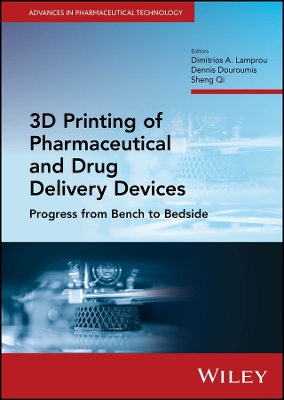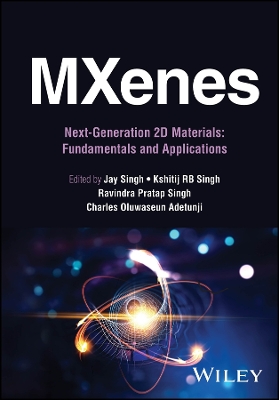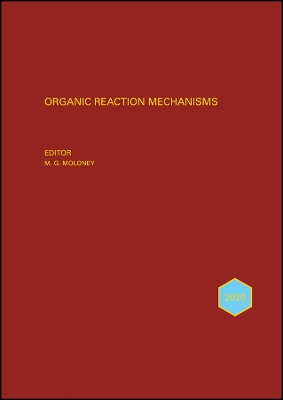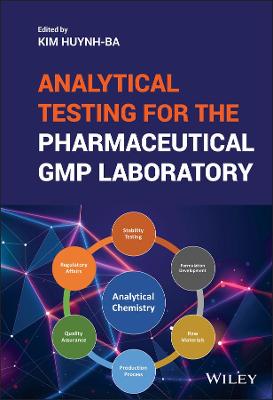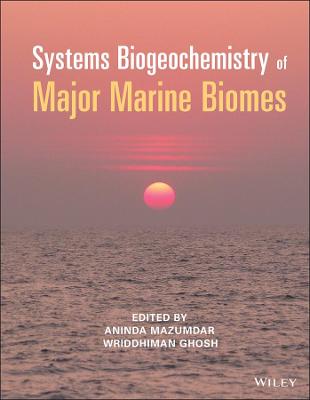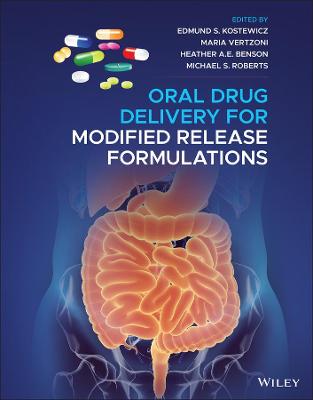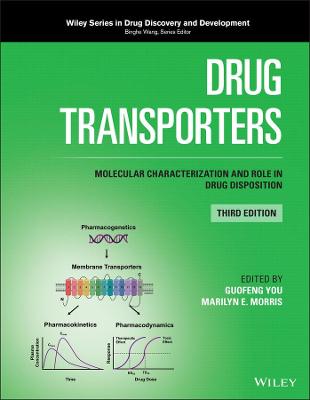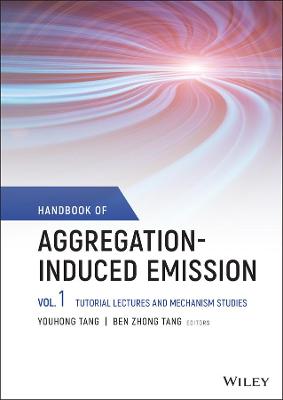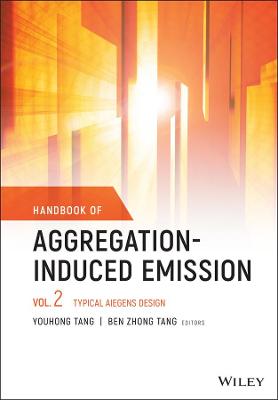Unique Methods for Analyzing Failures and Catastrophic Events
 -15%
portes grátis
-15%
portes grátis
Unique Methods for Analyzing Failures and Catastrophic Events
A Practical Guide for Engineers
Sofronas, Anthony
John Wiley & Sons Inc
06/2022
352
Dura
Inglês
9781119748250
15 a 20 dias
616
Preface xix
Acknowledgments xxi
1 Engineering Suggestions Based on Experience 1
1.1 What Should We Learn from This Book? 1
1.1.1 Summary 3
Reference 3
1.2 We All Contribute to Each Other's Success 3
1.2.1 Summary 5
Reference 5
1.3 Why Performing Calculations is Important to an Engineer's Career 5
1.3.1 Summary 7
Reference 8
1.4 How an Engineering Consultant Can Help Your Company 8
1.4.1 Summary 10
1.5 The Benefit of Keeping Complex Problems Simple 10
1.5.1 Summary 14
1.6 Taking Risks and Making High-Level Presentations 15
1.6.1 Summary 16
1.7 Searching the Literature for Data 16
1.7.1 Equations 17
1.7.2 Facts 17
1.7.3 Credibility 17
1.7.4 Accuracy of the Data 17
1.7.5 Sources to Search 18
1.7.6 Summary 18
References 19
1.8 Cautions to New to Industry Technical Personnel 19
1.8.1 The Wrong Frequency 19
1.8.2 Using the Incorrect Measuring Technique 20
1.8.3 Never Under-Estimate the Value of Experienced People 20
1.8.4 Check and Double Check Your Design 20
1.8.5 Some Understand the Equipment Much Better Than You 21
1.8.6 Summary 22
1.9 A Method for Analyzing Catastrophic Type Failures 22
References 24
2 Evaluating Failures and Designs 25
2.1 Twenty Rules to Remember 25
2.1.1 Summary 28
2.2 How to Avoid Being Overwhelmed in a Failure Situation 29
2.2.1 Summary 31
2.3 Catastrophic Failures and the Human Factor 31
2.3.1 Summary 35
References 35
2.4 The Importance of Alliances and Networking 35
2.4.1 Summary 36
2.5 Personal Checklists are Important 37
2.6 Checklist for Vibration Analysis 37
2.6.1 Summary 39
Reference 40
2.7 Checklist for New Piping System Installations 40
2.8 Checklists for Pumps and Compressors 40
2.9 Understanding What the Failure Data Is Telling You 41
2.9.1 Gear Damage 41
2.9.2 Shaft Failures 42
2.9.3 Weld Failures 43
2.9.4 Bolt Failures 43
2.9.5 Brittle Fracture Failures 45
2.9.6 Anti-Friction Bearing Failures 46
2.9.7 Spring Failures 46
2.9.8 Drilled Holes 47
2.9.9 Summary 48
2.10 Phantom Failures and Their Dilemma 49
2.10.1 Summary 50
2.11 Various Types of Equipment and Their Failure Loads 50
2.11.1 Summary 52
3 Mechanical Failures 53
3.1 Preventing Crankshaft Failures in Large Reciprocating Engines 53
3.1.1 Summary 57
3.2 Structural Collapse of a Reinforced Concrete Bridge 57
3.2.1 Summary 61
Reference 61
3.3 Failure Analysis Computations Differ from Design 61
3.3.1 Summary 64
3.4 Crack Growth and the Bending Failures of a Hollow Shaft 64
3.4.1 An In-Service Failure Example 66
3.4.2 The Assumptions and Comparisons 67
3.4.3 Summary 68
Reference 68
3.5 Why Did a Small Piece of Foam Cause the Shuttle Columbia to Crash? 68
3.5.1 Summary 71
Reference 71
3.6 Can the Aircraft Cowling Contain a Broken Turbine Blade? 71
3.6.1 Summary 72
References 72
3.7 Why Did My Car Windshield Break from a Very Small Stone? 73
3.7.1 Summary 73
3.8 Momentum or Why a Car Is Harder to Push and Then Easier When Rolling 73
3.8.1 Summary 75
3.9 Bearing Failure Due To Design Error 75
3.9.1 Summary 76
3.10 What Is the Shortest Stopping Distance for My Car? 76
3.10.1 Summary 76
3.11 How Hot Do Brake Disks Get in a Panic Stop? 77
3.11.1 Summary 78
3.12 Will the Turbocharger Disk Go Through its Housing? 78
3.12.1 Summary 80
3.13 Failure of an Agitator Gearbox 80
3.13.1 Summary 82
3.14 Failure of an Extruder Screw 82
3.14.1 Summary 83
Reference 83
3.15 Failure of a Steam Turbine Blade 84
3.15.1 Summary 87
3.16 How Long Will It Last? 87
3.16.1 Summary 90
Reference 90
3.17 Gear Life With a Load 90
3.17.1 Summary 92
3.18 Analyzing the Life of a Gear 93
3.18.1 Summary 94
3.19 Predicting the Cause of a Gear Tooth Crack Growth Past and Future 94
References 96
3.20 Nonlinear and Linear Impact Problems 97
3.20.1 Summary 100
3.21 Phantom Failure of an Expander-Dryer 100
3.21.1 Summary 103
3.22 Cracking of a Rail Hopper Car Due to Couple-Up 103
Reference 106
3.23 Loss of Oil Supply and Gear Set Destruction 106
References 109
3.24 Analyzing the Total Collapse of a Multi-Story Building 110
References 115
4 Fluid Flow and Heat Transfer Examples 116
4.1 Addressing Heat Exchanger Tube Leaks 116
4.1.1 Summary 118
4.2 Explaining Flow Through Piping Using the Poiseuille Equation 119
4.2.1 Summary 120
4.3 A Local Flooding Event at a Plant Site 120
4.3.1 Summary 122
Reference 122
4.4 Examining Fan System Pulsations 122
4.4.1 Summary 125
References 126
4.5 The Dynamics of How an Aircraft Flies 126
4.5.1 Summary 129
4.6 How Much Wind Does It Take to Blow Over a Motor Coach? 129
4.6.1 Summary 131
4.7 How Much Wind Force to Buckle an Aircraft Hanger Door? 131
4.7.1 Summary 132
4.8 How Much Water on a Road to Float a Car? 132
4.8.1 Summary 133
4.9 How Fast Does an Object Hit the Ground? 133
4.9.1 Summary 135
4.10 Collapse of a Bubble and the Excitation Force on a Structure 135
4.10.1 Summary 139
4.11 Failure of a Cooling Tower Pump Due to Water Hammer 139
4.11.1 Summary 142
References 142
4.12 Braking Resistor Burn-Out on a Locomotive 142
4.12.1 Summary 144
4.13 Will a Small Ice Air Conditioner Work? 144
4.13.1 Summary 148
References 148
4.14 Prototype of Smallest Air Ice Cooler 148
4.14.1 Summary 149
5 Sports Examples 151
5.1 Why Does a Baseball Curve? 151
5.1.1 Summary 153
5.2 How Far Does a Baseball Go When Hit with Drag? 153
5.2.1 Summary 154
5.3 What Is the Force of a Batted Baseball? 154
5.3.1 Summary 155
5.4 Why Doesn't a Baseball Catcher's Arm Break with a 100-mph Fastball? 155
5.4.1 Some Data 156
5.4.2 Summary 157
5.5 Dynamics of a Billiard Ball 157
5.5.1 Summary 158
5.6 How Far Can a Golf Ball Go? 158
5.6.1 Summary 159
5.7 What Causes an Ice Skater to Spin so Fast? 159
5.7.1 Summary 160
5.8 Why Don't High Divers Get Injured? 160
5.8.1 Summary 162
References 162
5.9 How Hard Is a Boxers Punch? 163
5.9.1 Summary 164
6 Gas Explosion Events 165
6.1 Energy in Steam Boiler Explosions 165
6.1.1 Summary 167
References 167
6.2 Delayed Fireball-Type Explosions 167
6.2.1 Summary 171
References 171
6.3 Method for Investigating Hydrocarbon Explosions 171
6.3.1 Summary 178
References 178
6.4 Pipeline Explosion Critical Zone 179
6.4.1 Summary 179
6.5 Pneumatic Explosion Debris Range 180
6.5.1 Summary 181
6.6 How Are the Effect of Massive Energy Releases Compared? 182
6.6.1 Summary 183
6.7 Engine Air Intake Manifold Explosion 183
6.7.1 Summary 185
Reference 185
7 Vibration and Impact: The Cause of Failures 186
7.1 Investigating a Possible Cause for a Coupling Failure in a Centrifugal Compressor 186
7.1.1 Summary 192
References 192
7.2 Sudden Power Interruption to a System 193
7.2.1 Summary 195
7.3 Effect of Liquid Slug in a Centrifugal Compressor 195
7.3.1 Summary 198
Reference 198
7.4 Weld Failures in Vibrating Equipment 198
7.4.1 Summary 201
References 201
7.5 Effect of Gear Chatter on Pinion Teeth Impact 202
7.5.1 Summary 202
7.6 Holzer Method for Calculating Torsional Multi-mass Systems 203
7.6.1 Summary 204
7.7 What to do When the Vibration Levels Increase on Large Gearboxes 204
7.7.1 Summary 209
Reference 209
7.8 How Vibratory Torque Relates to Bearing Cap Vibration in a Gearbox 209
7.8.1 Summary 211
Reference 211
7.9 Vibration of a Polymer Extruder Gearbox 211
7.9.1 Summary 212
References 213
7.10 Processing and Wear Load Increase in a Polymer Extruder 213
7.10.1 Summary 214
Reference 214
7.11 Vibration Charts Can Give Faulty Information 214
7.11.1 Summary 215
7.12 Have Torsional Vibrations Caused the Gearbox Pinion to Fail? 216
7.12.1 Summary 218
8 Examining the Human Body 219
8.1 What Causes Football Brain Injuries? 219
8.1.1 Summary 223
References 223
8.2 Life Assessment Diagrams 223
8.2.1 Summary 224
8.3 Assessing the Cumulative Damage Done by Head Impacts 224
8.3.1 Summary 228
References 228
8.4 What Happens When I Hit My Head and See Stars? 229
8.4.1 Summary 230
8.5 How Does the Body Keep Cool? 230
8.5.1 Summary 232
8.6 How Do Our Muscles Work? 232
8.6.1 Summary 234
8.7 Why Do People Die from Heatstroke in a 75 ? FCar? 234
8.7.1 Summary 235
8.8 What Damage Can a Safety Airbag Do to a Human? 236
8.8.1 Summary 236
8.9 How Is Blood Pressure Measured? 236
8.9.1 Summary 237
8.10 How Does the Heart Work? 237
8.10.1 Summary 241
8.11 Restricting the Spread of a Virus 241
8.11.1 Summary 244
Reference 245
8.12 Why Do Some Survive a Freefall Out of an Aircraft? 246
8.12.1 Summary 246
9 Other Curious Catastrophic Failures Related to Earth 247
9.1 Can an Asteroid Be Deflected from Hitting Earth? 247
9.1.1 Summary 249
9.2 What Size Crater Does a Large Asteroid Make When It Hits Earth? 250
9.2.1 Summary 253
9.3 What Is an Earthquake? 253
9.3.1 Summary 255
9.4 Earthquakes Are so Strong Why Don't They Do More Damage? 256
9.4.1 Summary 258
9.5 Concerns on the Super-Volcano Under Yellowstone National Park 258
9.5.1 Summary 260
References 261
9.6 What Is a Tsunami and How Do They Form? 261
9.6.1 Summary 262
Reference 262
9.7 What Is a Tornado? 262
9.7.1 Summary 264
Reference 264
9.8 Can a Tornado Really Lift a House? 264
9.8.1 Summary 265
9.9 Can Straw Penetrate a Tree in a Tornado? 265
9.9.1 Summary 266
Reference 266
9.10 What Is a Hurricane? 266
9.10.1 Summary 267
10 Strange Occurrences and Other Interesting Items 268
10.1 What in the Force of a Ship Hitting a Whale? 268
10.1.1 Summary 269
Reference 270
10.2 How Much Wind to Blow Over a Tree 270
10.2.1 Summary 272
10.3 Why Do Objects Appear Smaller Than They Are? 273
10.3.1 Summary 274
10.4 Do We Feel a Force When Near Large Objects? 274
10.4.1 Summary 275
10.5 Why Does the Moon Sometimes Appear So Big on the Horizon? 275
10.5.1 Summary 276
10.6 How Does an Air Conditioner Operate? 276
10.6.1 Summary 277
Reference 277
10.7 How Fast to Heat Up a Room? 278
10.7.1 Summary 278
10.8 How Do I Size an Air Conditioner for a Garage? 278
10.8.1 Summary 279
10.9 At What Speed Does a Locomotive Become De-railed? 279
10.9.1 Summary 280
10.10 Are Those Huge Cruise Ships Stable? 280
10.10.1 Summary 281
10.11 Why Are Arches Used? 281
10.11.1 Summary 285
10.12 Why Don't Bighorn Sheep Die When Banging Their Heads? 285
10.12.1 Summary 286
10.13 Why Can't We Walk on Water? 286
10.13.1 Summary 288
Reference 288
10.14 How to Predict the Outcome of the Stock Market 288
10.14.1 Summary 292
10.15 Things Aren't as Random as They May Appear 293
Reference 294
10.15.1 Summary 295
10.16 Why Do Certain Events Seem to Happen Quite Often? 295
10.16.1 Summary 295
10.17 Occurrences on Machines and Structures 295
10.17.1 Summary 298
10.18 How Long Does It Take to Thaw a Frozen Turkey and to Cook It? 298
10.18.1 Summary 300
11 Magic Tricks Using Engineering Principles 301
11.1 Surface Tension and Floating Metal 301
11.1.1 Summary 304
11.2 Acceleration of Gravity and the Money Challenge 304
11.2.1 Summary 305
11.3 The Jumping Coin 305
11.3.1 Summary 306
11.4 The Belt Balancing Act 306
11.4.1 Summary 307
11.5 How Can It Be Held Up by Threads? 308
11.5.1 Summary 309
11.6 Pulling the Tablecloth 310
11.6.1 Summary 311
12 Useful Forms of the Equations Used in this Book 312
12.1 The Equations of Motion 312
12.2 Newton's First Law of Force 312
12.3 Newton's Second Law of Force 313
12.4 Newton's Third Law of Force 313
12.5 Newton's Gravitation Theory 313
12.6 Static Equilibrium 314
12.7 Momentum and Impulse 314
12.8 Kinetic Energy 314
12.9 Potential Energy 315
12.10 Conservation of Energy 315
12.11 Bernoulli's Equation 315
12.12 Specific Heat Equation 316
12.13 Conduction Equation 316
12.14 Convection Equation 316
12.15 Radiation Equation 317
12.16 Theories of Material Failure 317
12.17 Archimedes Principle 317
12.18 Centrifugal Force 318
12.19 What Is Enthalpy? 318
13 A Little About Some Famous Scientists Mentioned in This Book 319
13.1 Isaac Newton (1642-1726 AD) 319
13.2 Daniel Bernoulli (1700-1782 AD) 320
13.3 Archimedes of Syracuse (287-212 BC) 320
13.4 William Rankine (1820-1872 AD) 321
13.5 Leonardo da Vinci (1452-1519 AD) 321
13.6 Heinrich Holzer 321
13.7 Stephan Timoshenko (1878-1972) 322
Reference 322
13.8 Jacob P. Den Hartog (1901-1989) 322
References 322
13.9 Wilson, Ker, William 322
Index 325
Preface xix
Acknowledgments xxi
1 Engineering Suggestions Based on Experience 1
1.1 What Should We Learn from This Book? 1
1.1.1 Summary 3
Reference 3
1.2 We All Contribute to Each Other's Success 3
1.2.1 Summary 5
Reference 5
1.3 Why Performing Calculations is Important to an Engineer's Career 5
1.3.1 Summary 7
Reference 8
1.4 How an Engineering Consultant Can Help Your Company 8
1.4.1 Summary 10
1.5 The Benefit of Keeping Complex Problems Simple 10
1.5.1 Summary 14
1.6 Taking Risks and Making High-Level Presentations 15
1.6.1 Summary 16
1.7 Searching the Literature for Data 16
1.7.1 Equations 17
1.7.2 Facts 17
1.7.3 Credibility 17
1.7.4 Accuracy of the Data 17
1.7.5 Sources to Search 18
1.7.6 Summary 18
References 19
1.8 Cautions to New to Industry Technical Personnel 19
1.8.1 The Wrong Frequency 19
1.8.2 Using the Incorrect Measuring Technique 20
1.8.3 Never Under-Estimate the Value of Experienced People 20
1.8.4 Check and Double Check Your Design 20
1.8.5 Some Understand the Equipment Much Better Than You 21
1.8.6 Summary 22
1.9 A Method for Analyzing Catastrophic Type Failures 22
References 24
2 Evaluating Failures and Designs 25
2.1 Twenty Rules to Remember 25
2.1.1 Summary 28
2.2 How to Avoid Being Overwhelmed in a Failure Situation 29
2.2.1 Summary 31
2.3 Catastrophic Failures and the Human Factor 31
2.3.1 Summary 35
References 35
2.4 The Importance of Alliances and Networking 35
2.4.1 Summary 36
2.5 Personal Checklists are Important 37
2.6 Checklist for Vibration Analysis 37
2.6.1 Summary 39
Reference 40
2.7 Checklist for New Piping System Installations 40
2.8 Checklists for Pumps and Compressors 40
2.9 Understanding What the Failure Data Is Telling You 41
2.9.1 Gear Damage 41
2.9.2 Shaft Failures 42
2.9.3 Weld Failures 43
2.9.4 Bolt Failures 43
2.9.5 Brittle Fracture Failures 45
2.9.6 Anti-Friction Bearing Failures 46
2.9.7 Spring Failures 46
2.9.8 Drilled Holes 47
2.9.9 Summary 48
2.10 Phantom Failures and Their Dilemma 49
2.10.1 Summary 50
2.11 Various Types of Equipment and Their Failure Loads 50
2.11.1 Summary 52
3 Mechanical Failures 53
3.1 Preventing Crankshaft Failures in Large Reciprocating Engines 53
3.1.1 Summary 57
3.2 Structural Collapse of a Reinforced Concrete Bridge 57
3.2.1 Summary 61
Reference 61
3.3 Failure Analysis Computations Differ from Design 61
3.3.1 Summary 64
3.4 Crack Growth and the Bending Failures of a Hollow Shaft 64
3.4.1 An In-Service Failure Example 66
3.4.2 The Assumptions and Comparisons 67
3.4.3 Summary 68
Reference 68
3.5 Why Did a Small Piece of Foam Cause the Shuttle Columbia to Crash? 68
3.5.1 Summary 71
Reference 71
3.6 Can the Aircraft Cowling Contain a Broken Turbine Blade? 71
3.6.1 Summary 72
References 72
3.7 Why Did My Car Windshield Break from a Very Small Stone? 73
3.7.1 Summary 73
3.8 Momentum or Why a Car Is Harder to Push and Then Easier When Rolling 73
3.8.1 Summary 75
3.9 Bearing Failure Due To Design Error 75
3.9.1 Summary 76
3.10 What Is the Shortest Stopping Distance for My Car? 76
3.10.1 Summary 76
3.11 How Hot Do Brake Disks Get in a Panic Stop? 77
3.11.1 Summary 78
3.12 Will the Turbocharger Disk Go Through its Housing? 78
3.12.1 Summary 80
3.13 Failure of an Agitator Gearbox 80
3.13.1 Summary 82
3.14 Failure of an Extruder Screw 82
3.14.1 Summary 83
Reference 83
3.15 Failure of a Steam Turbine Blade 84
3.15.1 Summary 87
3.16 How Long Will It Last? 87
3.16.1 Summary 90
Reference 90
3.17 Gear Life With a Load 90
3.17.1 Summary 92
3.18 Analyzing the Life of a Gear 93
3.18.1 Summary 94
3.19 Predicting the Cause of a Gear Tooth Crack Growth Past and Future 94
References 96
3.20 Nonlinear and Linear Impact Problems 97
3.20.1 Summary 100
3.21 Phantom Failure of an Expander-Dryer 100
3.21.1 Summary 103
3.22 Cracking of a Rail Hopper Car Due to Couple-Up 103
Reference 106
3.23 Loss of Oil Supply and Gear Set Destruction 106
References 109
3.24 Analyzing the Total Collapse of a Multi-Story Building 110
References 115
4 Fluid Flow and Heat Transfer Examples 116
4.1 Addressing Heat Exchanger Tube Leaks 116
4.1.1 Summary 118
4.2 Explaining Flow Through Piping Using the Poiseuille Equation 119
4.2.1 Summary 120
4.3 A Local Flooding Event at a Plant Site 120
4.3.1 Summary 122
Reference 122
4.4 Examining Fan System Pulsations 122
4.4.1 Summary 125
References 126
4.5 The Dynamics of How an Aircraft Flies 126
4.5.1 Summary 129
4.6 How Much Wind Does It Take to Blow Over a Motor Coach? 129
4.6.1 Summary 131
4.7 How Much Wind Force to Buckle an Aircraft Hanger Door? 131
4.7.1 Summary 132
4.8 How Much Water on a Road to Float a Car? 132
4.8.1 Summary 133
4.9 How Fast Does an Object Hit the Ground? 133
4.9.1 Summary 135
4.10 Collapse of a Bubble and the Excitation Force on a Structure 135
4.10.1 Summary 139
4.11 Failure of a Cooling Tower Pump Due to Water Hammer 139
4.11.1 Summary 142
References 142
4.12 Braking Resistor Burn-Out on a Locomotive 142
4.12.1 Summary 144
4.13 Will a Small Ice Air Conditioner Work? 144
4.13.1 Summary 148
References 148
4.14 Prototype of Smallest Air Ice Cooler 148
4.14.1 Summary 149
5 Sports Examples 151
5.1 Why Does a Baseball Curve? 151
5.1.1 Summary 153
5.2 How Far Does a Baseball Go When Hit with Drag? 153
5.2.1 Summary 154
5.3 What Is the Force of a Batted Baseball? 154
5.3.1 Summary 155
5.4 Why Doesn't a Baseball Catcher's Arm Break with a 100-mph Fastball? 155
5.4.1 Some Data 156
5.4.2 Summary 157
5.5 Dynamics of a Billiard Ball 157
5.5.1 Summary 158
5.6 How Far Can a Golf Ball Go? 158
5.6.1 Summary 159
5.7 What Causes an Ice Skater to Spin so Fast? 159
5.7.1 Summary 160
5.8 Why Don't High Divers Get Injured? 160
5.8.1 Summary 162
References 162
5.9 How Hard Is a Boxers Punch? 163
5.9.1 Summary 164
6 Gas Explosion Events 165
6.1 Energy in Steam Boiler Explosions 165
6.1.1 Summary 167
References 167
6.2 Delayed Fireball-Type Explosions 167
6.2.1 Summary 171
References 171
6.3 Method for Investigating Hydrocarbon Explosions 171
6.3.1 Summary 178
References 178
6.4 Pipeline Explosion Critical Zone 179
6.4.1 Summary 179
6.5 Pneumatic Explosion Debris Range 180
6.5.1 Summary 181
6.6 How Are the Effect of Massive Energy Releases Compared? 182
6.6.1 Summary 183
6.7 Engine Air Intake Manifold Explosion 183
6.7.1 Summary 185
Reference 185
7 Vibration and Impact: The Cause of Failures 186
7.1 Investigating a Possible Cause for a Coupling Failure in a Centrifugal Compressor 186
7.1.1 Summary 192
References 192
7.2 Sudden Power Interruption to a System 193
7.2.1 Summary 195
7.3 Effect of Liquid Slug in a Centrifugal Compressor 195
7.3.1 Summary 198
Reference 198
7.4 Weld Failures in Vibrating Equipment 198
7.4.1 Summary 201
References 201
7.5 Effect of Gear Chatter on Pinion Teeth Impact 202
7.5.1 Summary 202
7.6 Holzer Method for Calculating Torsional Multi-mass Systems 203
7.6.1 Summary 204
7.7 What to do When the Vibration Levels Increase on Large Gearboxes 204
7.7.1 Summary 209
Reference 209
7.8 How Vibratory Torque Relates to Bearing Cap Vibration in a Gearbox 209
7.8.1 Summary 211
Reference 211
7.9 Vibration of a Polymer Extruder Gearbox 211
7.9.1 Summary 212
References 213
7.10 Processing and Wear Load Increase in a Polymer Extruder 213
7.10.1 Summary 214
Reference 214
7.11 Vibration Charts Can Give Faulty Information 214
7.11.1 Summary 215
7.12 Have Torsional Vibrations Caused the Gearbox Pinion to Fail? 216
7.12.1 Summary 218
8 Examining the Human Body 219
8.1 What Causes Football Brain Injuries? 219
8.1.1 Summary 223
References 223
8.2 Life Assessment Diagrams 223
8.2.1 Summary 224
8.3 Assessing the Cumulative Damage Done by Head Impacts 224
8.3.1 Summary 228
References 228
8.4 What Happens When I Hit My Head and See Stars? 229
8.4.1 Summary 230
8.5 How Does the Body Keep Cool? 230
8.5.1 Summary 232
8.6 How Do Our Muscles Work? 232
8.6.1 Summary 234
8.7 Why Do People Die from Heatstroke in a 75 ? FCar? 234
8.7.1 Summary 235
8.8 What Damage Can a Safety Airbag Do to a Human? 236
8.8.1 Summary 236
8.9 How Is Blood Pressure Measured? 236
8.9.1 Summary 237
8.10 How Does the Heart Work? 237
8.10.1 Summary 241
8.11 Restricting the Spread of a Virus 241
8.11.1 Summary 244
Reference 245
8.12 Why Do Some Survive a Freefall Out of an Aircraft? 246
8.12.1 Summary 246
9 Other Curious Catastrophic Failures Related to Earth 247
9.1 Can an Asteroid Be Deflected from Hitting Earth? 247
9.1.1 Summary 249
9.2 What Size Crater Does a Large Asteroid Make When It Hits Earth? 250
9.2.1 Summary 253
9.3 What Is an Earthquake? 253
9.3.1 Summary 255
9.4 Earthquakes Are so Strong Why Don't They Do More Damage? 256
9.4.1 Summary 258
9.5 Concerns on the Super-Volcano Under Yellowstone National Park 258
9.5.1 Summary 260
References 261
9.6 What Is a Tsunami and How Do They Form? 261
9.6.1 Summary 262
Reference 262
9.7 What Is a Tornado? 262
9.7.1 Summary 264
Reference 264
9.8 Can a Tornado Really Lift a House? 264
9.8.1 Summary 265
9.9 Can Straw Penetrate a Tree in a Tornado? 265
9.9.1 Summary 266
Reference 266
9.10 What Is a Hurricane? 266
9.10.1 Summary 267
10 Strange Occurrences and Other Interesting Items 268
10.1 What in the Force of a Ship Hitting a Whale? 268
10.1.1 Summary 269
Reference 270
10.2 How Much Wind to Blow Over a Tree 270
10.2.1 Summary 272
10.3 Why Do Objects Appear Smaller Than They Are? 273
10.3.1 Summary 274
10.4 Do We Feel a Force When Near Large Objects? 274
10.4.1 Summary 275
10.5 Why Does the Moon Sometimes Appear So Big on the Horizon? 275
10.5.1 Summary 276
10.6 How Does an Air Conditioner Operate? 276
10.6.1 Summary 277
Reference 277
10.7 How Fast to Heat Up a Room? 278
10.7.1 Summary 278
10.8 How Do I Size an Air Conditioner for a Garage? 278
10.8.1 Summary 279
10.9 At What Speed Does a Locomotive Become De-railed? 279
10.9.1 Summary 280
10.10 Are Those Huge Cruise Ships Stable? 280
10.10.1 Summary 281
10.11 Why Are Arches Used? 281
10.11.1 Summary 285
10.12 Why Don't Bighorn Sheep Die When Banging Their Heads? 285
10.12.1 Summary 286
10.13 Why Can't We Walk on Water? 286
10.13.1 Summary 288
Reference 288
10.14 How to Predict the Outcome of the Stock Market 288
10.14.1 Summary 292
10.15 Things Aren't as Random as They May Appear 293
Reference 294
10.15.1 Summary 295
10.16 Why Do Certain Events Seem to Happen Quite Often? 295
10.16.1 Summary 295
10.17 Occurrences on Machines and Structures 295
10.17.1 Summary 298
10.18 How Long Does It Take to Thaw a Frozen Turkey and to Cook It? 298
10.18.1 Summary 300
11 Magic Tricks Using Engineering Principles 301
11.1 Surface Tension and Floating Metal 301
11.1.1 Summary 304
11.2 Acceleration of Gravity and the Money Challenge 304
11.2.1 Summary 305
11.3 The Jumping Coin 305
11.3.1 Summary 306
11.4 The Belt Balancing Act 306
11.4.1 Summary 307
11.5 How Can It Be Held Up by Threads? 308
11.5.1 Summary 309
11.6 Pulling the Tablecloth 310
11.6.1 Summary 311
12 Useful Forms of the Equations Used in this Book 312
12.1 The Equations of Motion 312
12.2 Newton's First Law of Force 312
12.3 Newton's Second Law of Force 313
12.4 Newton's Third Law of Force 313
12.5 Newton's Gravitation Theory 313
12.6 Static Equilibrium 314
12.7 Momentum and Impulse 314
12.8 Kinetic Energy 314
12.9 Potential Energy 315
12.10 Conservation of Energy 315
12.11 Bernoulli's Equation 315
12.12 Specific Heat Equation 316
12.13 Conduction Equation 316
12.14 Convection Equation 316
12.15 Radiation Equation 317
12.16 Theories of Material Failure 317
12.17 Archimedes Principle 317
12.18 Centrifugal Force 318
12.19 What Is Enthalpy? 318
13 A Little About Some Famous Scientists Mentioned in This Book 319
13.1 Isaac Newton (1642-1726 AD) 319
13.2 Daniel Bernoulli (1700-1782 AD) 320
13.3 Archimedes of Syracuse (287-212 BC) 320
13.4 William Rankine (1820-1872 AD) 321
13.5 Leonardo da Vinci (1452-1519 AD) 321
13.6 Heinrich Holzer 321
13.7 Stephan Timoshenko (1878-1972) 322
Reference 322
13.8 Jacob P. Den Hartog (1901-1989) 322
References 322
13.9 Wilson, Ker, William 322
Index 325

